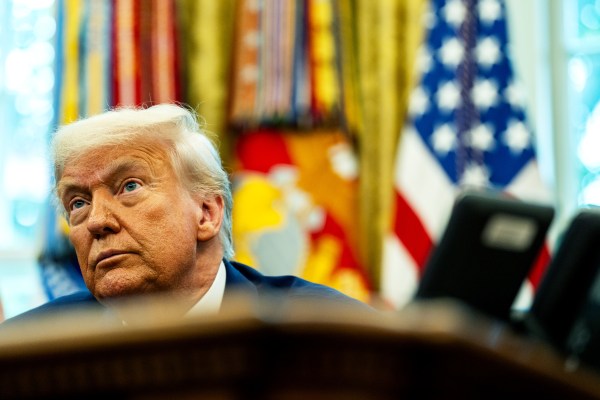CLARENDON, Pa.—When the COVID-19 pandemic hit, Kurt and Beth Kondak found themselves with multiple kids at home and a struggle familiar to millions of Americans: doing everything online.
Their son Luke could barely participate in online college classes: “So you’re on a Zoom call trying to talk with your group, obviously, and it keeps cutting out.”* He and his sister Grace started driving 8 miles away to the Kondaks’ family-owned grocery store and deli for a reliable internet connection.
The Kondaks aren’t alone: An estimated 42 million Americans still lack access to broadband (always-connected, high-speed internet), according to a 2021 report by BroadbandNow Research.
Lawmakers have thrown billions of dollars at fixing that. Last year Congress passed the Infrastructure Investment and Jobs Act, which earmarked $65 billion to build out broadband internet across the country and represents the largest single public investment by the federal government in telecommunications in American history.
Legislators at the Capitol can point to plenty of broadband projects back home the bill is funding: Rep. Don Bacon, a Nebraska Republican, said his state has a $200 million rural broadband plan underway, with most of the money courtesy of the infrastructure package. Democratic Rep. Abigail Spanberger’s office noted that 23 percent of Virginia’s population will be eligible for a $30 monthly stipend to help pay for home internet. In Arizona, the U.S. Department of Commerce Department has granted $105.8 million to connect more than 33,000 homes to the internet among five tribal groups.
The pandemic changed how we think about internet access. “We stopped thinking about broadband as a luxury,” Penn State telecommunications professor Christopher Ali said. “It is essential.”
But even with billions of dollars to use, states implementing broadband build-outs will face big hurdles: a lack of reliable data on just how deep the digital divide is, years-long bureaucratic delays, and rapidly changing technology.
The largest chunk in the infrastructure package, over $40 billion, will go directly to the states through the Broadband Equity, Access, and Deployment program. Each state gets $100 million and must submit five-year action plans to qualify for more. Proposals will map out which unserved areas states want to invest in, propose how best to get those areas online, and assess how long executing those plans will take.
The other $25 billion goes to various federal departments in stipends to help low-income households cover internet costs, plans to improve “digital inclusion and equity” among historically unserved or underserved groups, U.S. Department of Agriculture grants for building or upgrading broadband equipment in rural areas, and grants for broadband service to Native American tribes.
But one of the biggest difficulties for any program to navigate will be the lack of reliable data on who does and doesn’t have access to broadband. The U.S. Government Accountability Office says the data the FCC uses to map connectivity is “not always accurate.”
The FCC relies on self-reporting from internet service providers to measure broadband availability but counts an area as having sufficient connectivity if just one household in a census block can access the internet, painting an incomplete picture. Some states have started to forge ahead to get their own data.
An FCC spokesperson told Morning Consult that the commission has “acknowledged” that the mapping system is “broken.” And in 2020, President Donald Trump signed legislation to improve the accuracy of the FCC’s maps. But those won’t be completed until 2023.
“The delay is frustrating, but it’s also important that the FCC get these maps right given that they’ll be used to allocate funding and prioritize projects,” said John Bailey, a nonresident senior fellow at the American Enterprise Institute.*
Rep. Bob Latta of Ohio, the ranking Republican on the House Communications and Technology Subcommittee who helped spearhead that mapping bill, says success in building out broadband depends on getting those maps right. “If not, we risk leaving Americans with no service further behind,” he said in a statement.
Even with reliable mapping, building broadband infrastructure is an expensive endeavor that can take years, particularly in remote, mountainous, and/or forested areas. Providers have to wade through layers of bureaucratic processes, conduct environmental assessments, and obtain permits from multiple agencies.
While all 50 states now have programs to expand broadband access, only 26 states have centralized offices to coordinate or manage such efforts, according to the Pew Charitable Trusts*.
“It doesn’t make any sense for a state to build up huge infrastructure to do the kind of modeling, planning, mapping that they routinely do … because they’re only getting this federal government money once.” Blair Levin told The Dispatch. Levin served as the executive director of the National Broadband Plan during the Obama administration and is currently consulting with several state governments about their plans.
Experts say it could take a few years to see whether states use the money judiciously. “You’ve raised the issue that quite literally keeps me up at night,” Ali said. “I’m going to be watching very closely what each state says in their broadband plan.”
One of the more consequential decisions will be what kind of technology states invest in. Some are more costly upfront, but are considered “future proof” in that they can be upgraded.
Fiber optics—glass filament cables that can handle a huge amount of data—are considered the current gold standard by many experts.
“Fiber optics is kind of considered future proof because you can keep making it go faster by changing the electronics on either end of the fiber line,” Bailey, the American Enterprise Institute scholar, said.
It comes with a huge investment upfront to dig the trenches or mount the fiber on poles. “They have to know that there’s going to be enough people wanting to use it on the other side of it to justify that capital expenditure,” he added.
But states going with cheaper alternatives may find themselves saddled with subpar technology. In 2014, some telecommunications companies used FCC grants to lay down copper telephone wires for digital subscriber line (DSL) connections.
“They were deploying technologies that we thought in the late ’90s were awesome still in 2014,” Ali said. The technology abided by FCC requirements but was soon obsolete. “They were using all of these requirements as a ceiling to meet rather than a floor to build upon.”
DSL can be fast, but traffic degrades the connection’s speed and quality. Plus, copper wires are prone to rotting in the ground.
“And that’s how we end up with a lot of areas that may be served but are actually underserved,” Ali said. “They are literally stuck in 1999 in terms of speed, while the county right beside them might now have fiber optics.”
—with reporting by Audrey Fahlberg and Price St. Clair
*Corrections, October 6, 2022: Luke Kondak was a junior in college, not high school (as reported due to an editing error), during the COVID-19 pandemic. This article previously misspelled John Bailey and misidentified the Pew Charitable Trusts.






Please note that we at The Dispatch hold ourselves, our work, and our commenters to a higher standard than other places on the internet. We welcome comments that foster genuine debate or discussion—including comments critical of us or our work—but responses that include ad hominem attacks on fellow Dispatch members or are intended to stoke fear and anger may be moderated.
With your membership, you only have the ability to comment on The Morning Dispatch articles. Consider upgrading to join the conversation everywhere.